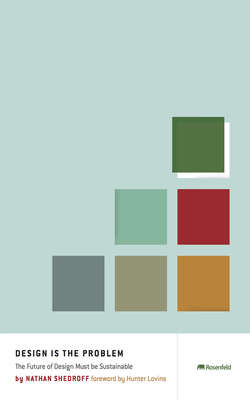Читать книгу Design Is The Problem - Nathan Shedroff - Страница 11
На сайте Литреса книга снята с продажи.
Centralization and Decentralization
ОглавлениеWhile it’s often easier to manage a few, centralized systems, these are often less sustainable solutions because, though strong, when they fail, the rest of the system fails with them. This is why a tree falling on a power line in Washington state can trigger a power outage over most of the Western United States. Centralization was the management approach that governed society and culture throughout much of human history (certainly Western history) and was responsible for creating the Industrial Age when it was applied to production. Everything from central banking to centralized power plants to large corporations with central management to centralized distribution systems to centralized education to the “hub and spoke” air transportation model reflects the thinking that centralization is best. And, from a purely management perspective, it often is. But just because it has been popular doesn’t make it the best approach.
Centralization is not without serious faults. Centralized decision-making often doesn’t reflect local expertise, knowledge, or understanding. Centralized distribution, combined with the standardization necessary with economies of scale often reduces choice, favoring quantity over variety. Centralized power (such as a coal-powered electricity plant) often produces power more efficiently that must be transmitted over greater distances (which reduces efficiency) and can reduce pollution in some communities but instead concentrate it in others. In addition, centralized power is often less resilient since fewer, larger power plants are vastly more vulnerable to accidents, outages, and attacks than many, smaller ones distributed throughout the service area.
It is because of the negative impacts on diversity and resiliency that centralization is often less sustainable. Decentralized systems for everything from manufacturing to distribution to energy generation to political rule tend to be more sustainable. Consider how unresponsive centralized government often is for local issues. Or consider how much more resilient a community’s power grid would be if it had a mix of energy inputs (especially if these were renewable) spread across a power network, available locally where it is used. Natural gas turbines, geothermal and hydrothermal generation, co-generation (creating energy from waste), solar, wind, and so on can all exist easily within most communities without adverse health risks or other community concerns. Where possible, generating power where it is used has always been an efficient solution (mills have been situated next to rivers that could provide water power for centuries). However, organizations (whether corporations, NGOs, or governments) that thrive because of their centralized control are often the most vocal opponents to decentralized solutions because their advantage is threatened, despite the beneficial aspects these solutions may have for everyone else.
It is because of the negative impacts on diversity and resiliency that centralization is often less sustainable. Decentralized systems for everything from manufacturing to distribution to energy generation to political rule tend to be more sustainable.
To be sure, decentralization itself also has problems. Chief among them are standardization and communication. While decentralization can increase resiliency (and often equitable opportunity), it requires standards and increased communication in order to function. The benefits, however, are often increased efficiency in management, more resilient operation in failure, and more innovated techniques in solutions generated. For example, it’s often easy for local communities to establish their own standards that may not be consistent, fair, or interoperable in a larger context. This was largely the case with every developing technology, from screw sizes to electricity current to railroad track gauges to education standards to laws to money. Decentralized solutions are often problematic at their onset (this is especially the case with new technologies) until standards are established. Progress is often retarded as competing solutions compete on low-level features and performance, that is until standards are established cooperatively or competitively. For example, consider software file formats. Until a standard was established for interchanging files and communicating with other equipment, say PostScript, applications couldn’t universally talk to printers, typesetters, or other equipment. It wasn’t practical to even work on advanced applications like page layout applications, image editing applications, or content management systems until these standards were established, despite the fact that they were envisioned long before they were able to be implemented.
Designers need to be aware of how their solutions inhibit or reinforce centralization—and be ready to defend why and whether their solutions are improvements and for whom these improvements benefit.
